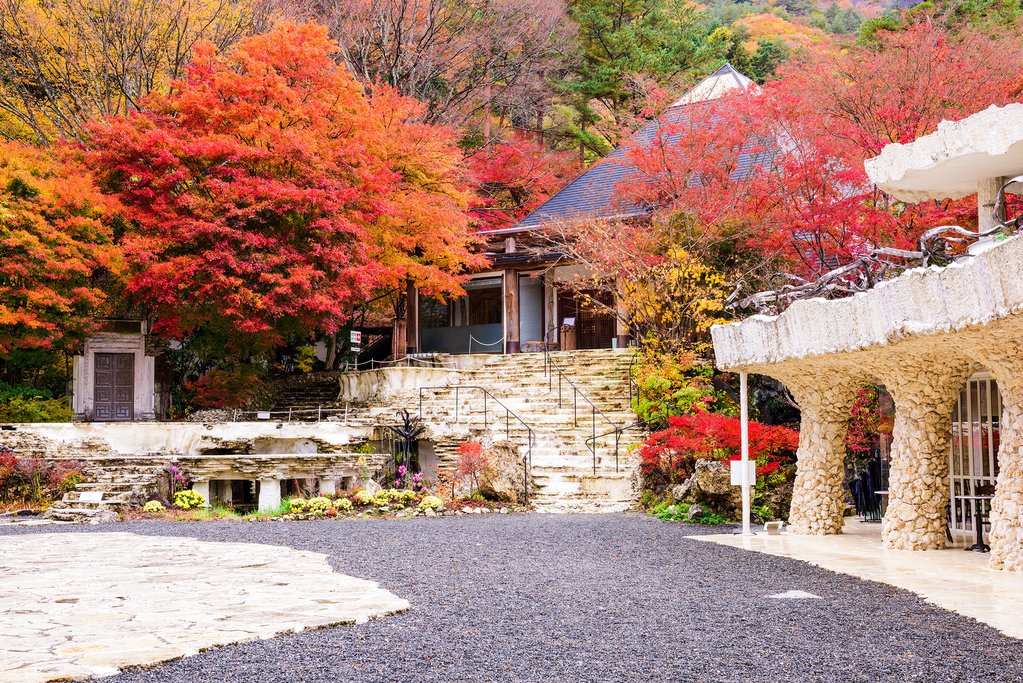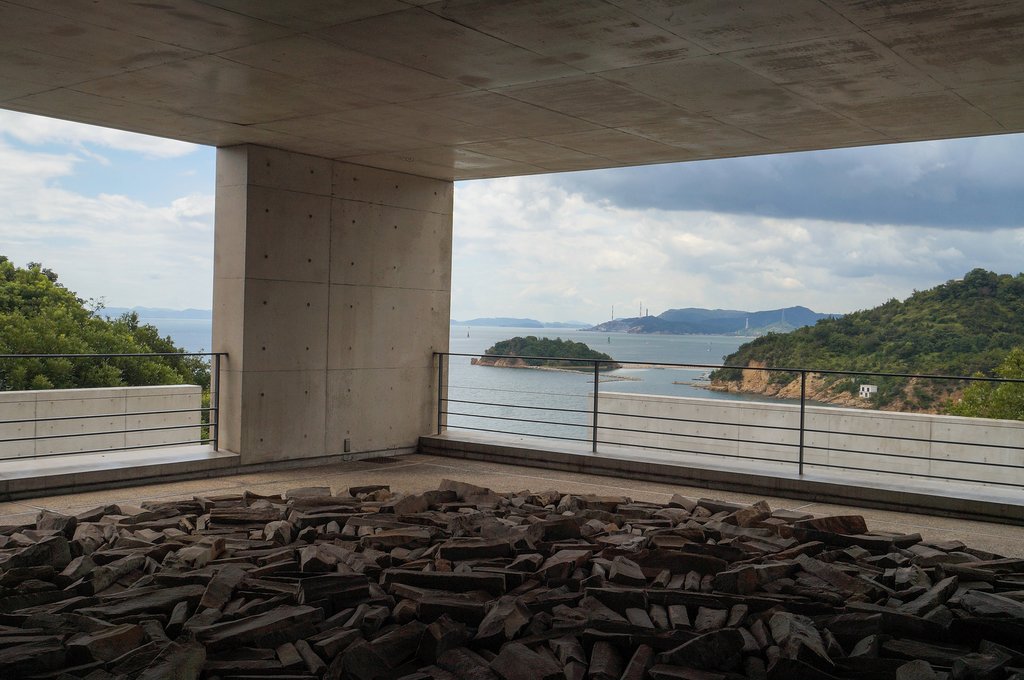Studio Ghibli Museum

The ultimate prize for many hardcore animation fans, and for some, the chief reason for traveling to Japan, the Studio Ghibli Museum is a temple to all things Hayao Miyazaki – a living legend and the famed creator of animated films like “Princess Mononoke” “Spirited Away” and “My Neighbor Totoro” who keeps on announcing his retirement and then not quite retiring. Even if he does, though, fans will still have this museum, which comes off as a kind of Japanese animé version of Hogwarts.
The building itself, with its winding staircases, hidden nooks and stained glass windows is worth a visit on its own, but the monthly rotating short film selection, which can only be seen here, and changing exhibits on Miyazaki’s inspiration, as well as his use of color and texture, are engaging and joyous, even if you can’t read the labels. Be sure to leave time to visit the rooftop café if you have kids in tow, and stop in at the gift shop for stuffed toys, books, and dishware only available here.
A note on admission: Tickets are inexpensive (approximately $10) but can sell out months in advance. Go through the museum website to choose two methods for overseas tourists: either the first of the month for the next four months (on June 1 they go on sale for June 1 though September 30, for example) or the tenth of the month for the following month (on June 10 they go on sale for all of July). These online systems are somewhat rudimentary and can get overwhelmed with traffic (that’s just how many Ghibli fans exist around the world!) so if you know anyone who lives in Japan and might be able to buy tickets in person, best to ask them.
1 Chome-1-83 Shimorenjaku, Mitaka, Tokyo
Osaka Prefectural Sayamaike Museum

Designed by world-renowned architect Tadao Ando, known for his meditative buildings embracing natural elements, the Sayamaike Museum just south of central Osaka might be one of the few museums where fewer people stay outside than go inside. That’s because many visitors linger before the to pose in the museum’s magnificent atrium, with its crisscrossing staircases and terraces with timed waterfalls, making Sayamaike one of Japan’s most Instagram-famous destinations.
That’s not to say the museum itself isn’t worth a visit for the story it tells: built into the embankment of a reservoir that’s supplied the city with water for hundreds of years, Sayamaike tells the story of the engineer-monks and -warriors who first created this man-made lake, and how it was destroyed by the elements, and how each master builder reconstructed it better than the last.
The museum’s centerpiece is a huge cross-section of the embankment, with lights that blink at the touch of a button to illustrate the different layers corresponding to different centuries. Beyond that, there are samples of tombstones found within the embankment, dioramas of the technology behind dams and irrigation systems, and one of the reservoir’s original water towers.
Although labels are entirely in Japanese, if you’re lucky, a volunteer may offer you a personal English-language tour: the museum is just getting used to its international fame, and non-Japanese visitors are treated like honored guests.
2 Chome-4 Ikejirinaka, Osakasayama, Osaka
Cupnoodles Museum

Fanatic foodies who come to Japan to spend a lot of time and money eating magnificently may consider themselves above instant ramen, but we all have a great memory of eating it at some point in our lives. The Cupnoodles Museum, also called the Momofuku Ando Instant Ramen Museum after the creator of instant ramen, is like a wacky, colorful return to childhood, with edible souvenirs.
You’ll be greeted by a bronze statue of the legendary Mr. Ando in front of the building, and proceed down a tunnel decorated with different instant noodle packages that seems designed to be the background to a thousand selfies. In addition to a replica of Ando’s work shed, you can explore exhibitions on how he developed the instant noodle, how it went from Japanese marvel to worldwide favorite, and even how it was packaged for astronauts.
Once sufficiently inspired, you can try your hand at making your very own cup of noodles at the noodle factory. After you’ve decorated the outside of your container, you’ll be shepherded along several counter spaces where you can choose the soup base flavor and any number of freeze dried ingredients, which make for a rich, complex soup once you add hot water.
Also on hand is a chicken ramen factory, where you can take part in a workshop to make ramen noodles from scratch and “flash fry” them according to Andoa’s traditional method. Only the second of these two requires advanced reservations, but both will leave you with a personalized snack you can eat on the road, or take all the way home.
8-25 Masumicho, Ikeda, Osaka
Chat with a local specialist who can help organize your trip.
Tokyo Metro Museum

Any museum about trains is bound to be charming, but Tokyo’s Metro system has the added appeal of looking like something out of a Wes Anderson film, with its quaint, colorful cars with plush seating, and even special tunes written for each line and each station. The Tokyo Metro Museum isn’t just for transit enthusiasts, though; it’s for anyone who appreciates transportation design, anyone who marvels at the astounding efficiency of Japan’s train systems, or anyone who loves to learn how things are built and how things work.
Although the museum may appear to be geared towards kids, it’s worth a stop even if you’re decades away from childhood: many adults who have nurtured lifelong obsessions with public transit and infrastructure will get a fascinating glimpse into underground Tokyo.
After inserting your ticket into a gate just as if you were entering a station, you’ll learn about the history of Tokyo’s subways, take a look at a restored boxcar from Asia’s first subway line, (Tokyo’s Ginza line) and survey century-old advertisements on a recreated subway platform. You can also step into a train simulator, or watch a demonstration on the technology employed in creating a subway tunnel. The best part of your visit, however, may be the gift shop, where you can buy subway-themed souvenirs with the characteristic Japanese kawaiior “cutesy” style.
6 Chome-3-1 Higashikasai, Edogawa City, Tokyo
Kubota Itchiku Art Museum

Kimonos are an integral part of Japanese history and culture, but you see precious few of them on the streets these days, unless they’re being worn by tourists in high-traffic areas looking for a photo op, or by the few geisha wandering around Gion, the riverside entertainment area in Kyoto.
But kimonos are a wearable form of art, and nothing reminds you of that quite like the strange but beautiful Kubota Itchiku Art Museum on the shores of Lake Kawaguchi, just north of Mt. Fuji. Kubota Itchiku was a master textile designer who revived an ancient silk-dying art called Tsujigahana, and this is a museum dedicated to his best works.
The museum itself looks like something that would fit in well in Gaudì’s Barcelona, its main building made from Okinawan coral and limestone, with organic-looking columns that seem to grow from the ground and taper like trees. The museum’s gardens, spread out over the slopes behind the main building, are dotted with Asian and African works of art and adorned with Japanese maple trees and bamboo stalks.
Inside, you’ll take in vibrant kimonos reflecting various themes, and marvel at the Symphony of Light, a collective masterwork of 80 kimonos depicting the Four Seasons, displayed in a timber-frame room that feels old-fashioned yet timeless. Once you’ve had your fill of these extraordinary pieces, be sure to take a few minutes to relax over a cup of matcha in Itchiku’s former workshop, now a tearoom.
2255 Kawaguchi, Fujikawaguchiko-machi, Minamitsuru-gun, Yamanashi-ken
D.T. Suzuki Museum

Like the Sayamaike Reservoir Museum above, the D.T. Suzuki Museum, designed by Tanigushi Yoshio just next to Kanazawa Castle Park is probably even more popular for its architecture than for its subject. But in this case, architecture and subject are one and the same, since the museum is meant to commemorate the Zen Buddhist philosopher DT Suzuki by its very design: clean lines and calm open spaces are meant to instill in visitors the same sense of tranquility espoused by Suzuki’s teachings, and the three main buildings constructed around a pond, called the Water Mirror Garden, promote quiet and contemplation.
Take some time to page through Suzuki’s (translated into English as well) before roaming the museum grounds and garden lost in your own thoughts, or take a seat in the aptly named Contemplative Space, a room without walls that’s been left open to the elements, symbolizing a distinctly Zen idea of how nature can interact with architecture.
So many of Japan’s cities can seem frenetic, overwhelming, and purely about pleasure; a visit to this museum is a chance to breathe, reconnect with your inner self, and think about what what’s truly important in life. It’s also, not surprisingly, a place to take some Instagram-worthy photos, but try not to disturb anyone else when you do.
3 Chome-4-20 Hondamachi, Kanazawa, Ishikawa
Naoshima

It may be cheating a bit to include this one, but the so-called “art islands” (of which Naoshima is the main one) are basically huge, outdoor museums. The vision of Japanese billionaire Soichiro Fukutake, Naoshima, and its sister islands Teshima and Inujima used to be a remote archipelago in Japan’s Seto Inland Sea. Then the art-loving Fukutake came across them while looking for a place to house his own private art collection, which includes works by Bruce Naumann, David Hockney, and Giacometti. He hired renowned architect Tadao Ando (responsible for the Sayamaike Reservoir Museum above) to build Benesse House – a luxury hotel crossed with a gallery. Soon it had become the centerpiece of what is now one of Japan’s, and perhaps the world’s, most prized art destinations.
These islands may seem remote, but they are an easy, 20-minute ferry ride from the port town of Uno on Japan’s main island Honshu. Once there, you’ll find plenty of affordable guesthouses to host you (if you don’t want to splurge on the $400-per-night Benesse House, that is), and a lush, forested landscape dotted with museums like the Chichu Art Museum (also an Ando project), the Art House Project, a collection of abandoned houses-turned-art installations in the fishing village of Honmura, and I♥YU, a colorful bathhouse with patterned tiles reminiscent of the azulejo tiles of Portugal. Benesse House offers a guest shuttle, but the best way to get around these tranquil islands is by rented bike; that way you’ll be able to stop and go at your leisure, and take in everything there is to see.
For more, see our 6 Best Local and Cultural Experiences in Japan.
